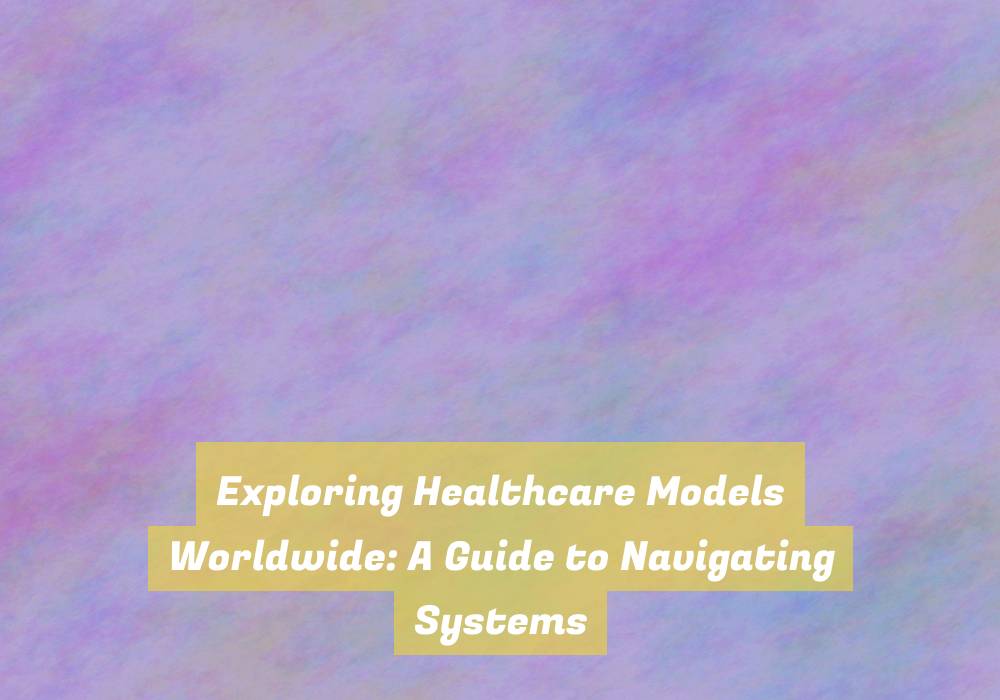Exploring Healthcare Models Worldwide: A Guide to Navigating Systems
As you consider the contrasting approaches to healthcare models worldwide, you may find yourself intrigued by the complexities and variations that exist across different systems.
From the universal coverage of single-payer systems to the diversity of multi-payer models, the landscape of healthcare is vast and intricate.
These systems have far-reaching implications for both patients and providers, and understanding them is crucial for making informed decisions about healthcare.
So, letG??s embark on a journey to explore the nuances of healthcare models around the world and gain insights that may shape your understanding of healthcare systems in your own context.
Understanding Single-Payer Systems
If you want to understand how single-payer healthcare systems work, itG??s important to grasp the fundamental principles behind this model.
In a single-payer system, the government is the sole entity responsible for collecting all healthcare fees and paying out all healthcare costs. This means that every citizen has access to healthcare services, as the government provides coverage for all essential medical needs. It simplifies the billing process, as patients no longer deal with multiple insurance companies or pay out-of-pocket for most services. Instead, the government uses taxes to fund the healthcare system, aiming to ensure universal coverage and equal access to care for all citizens.
One of the key advantages of a single-payer system is its potential to reduce overall healthcare spending. By streamlining administrative costs and leveraging the governmentG??s bargaining power to negotiate lower prices for medical services and prescription drugs, single-payer systems can achieve cost savings. Additionally, proponents argue that by eliminating the profit motive from healthcare, the focus can shift to providing high-quality care rather than generating revenue.
Understanding the fundamental principles of single-payer systems is crucial for evaluating its potential impact on healthcare delivery and patient outcomes.
Exploring Multi-Payer Healthcare Models
Now that you understand the fundamental principles of single-payer systems, letG??s explore the multi-payer healthcare models and how they differ in their approach to funding and providing healthcare services.
Multi-payer systems involve multiple insurance entities, both public and private, that individuals can choose from. In these models, individuals often have the option to select their insurance plan, allowing for a variety of coverage options and pricing structures. This can lead to increased competition among insurers, potentially resulting in improved services and innovation within the healthcare industry.
One key feature of multi-payer systems is the ability for individuals to have more control over their healthcare choices. With a range of insurance options, individuals can tailor their coverage to meet their specific needs and preferences. Additionally, multi-payer models often offer a wider range of healthcare providers and facilities for patients to choose from, potentially leading to increased access to care.
However, the complexity of managing multiple insurance plans and the administrative costs associated with such systems can be a downside. Furthermore, disparities in coverage and access to care can arise based on individualsG?? ability to pay for different insurance plans.
Understanding the nuances of multi-payer healthcare models is crucial for navigating the diverse landscape of healthcare systems worldwide.
Analyzing Public Healthcare Structures
How do public healthcare structures differ from private healthcare models in their approach to providing and funding healthcare services?
Public healthcare structures are typically funded and managed by the government, aiming to provide universal access to essential healthcare services for all citizens. These systems are often financed through taxes and government allocations, ensuring that healthcare services are available to everyone, regardless of their ability to pay.
In contrast, private healthcare models are driven by the principles of individual choice and market competition. They rely on private funding, such as insurance premiums and out-of-pocket payments, and prioritize profitability and efficiency.
Public healthcare structures focus on equitable distribution of healthcare resources, prioritizing the collective welfare of the population, while private healthcare models emphasize personalized care and patient satisfaction, often catering to those who can afford to pay for premium services.
Understanding the differences between these approaches is crucial for policymakers and healthcare professionals striving to create effective and inclusive healthcare systems.
Navigating Private Healthcare Systems
Navigating private healthcare systems can present unique challenges and opportunities for individuals seeking personalized care and tailored medical services. When exploring private healthcare options, itG??s essential to consider factors such as cost, coverage, and quality of care. Unlike public healthcare systems, private healthcare often offers a wider range of services, shorter wait times, and a greater emphasis on patient experience. However, navigating the complexities of insurance plans, out-of-pocket expenses, and the variability of healthcare providers can be daunting.
To effectively navigate private healthcare systems, start by researching different insurance plans to understand their coverage, limitations, and costs. Consider seeking recommendations from trusted sources or using online platforms that provide insights into the quality of care offered by different providers.
When choosing a healthcare provider, prioritize transparency regarding pricing, treatment options, and the qualifications of medical professionals. Additionally, take advantage of any opportunities for personalized care, such as telemedicine services or wellness programs.
Conclusion
In conclusion, navigating healthcare models worldwide can be complex, but understanding the different systems can help you make informed decisions about your healthcare.
Whether itG??s a single-payer system, multi-payer model, public healthcare structure, or private system, knowing the ins and outs of each can empower you to access the care you need.
Keep exploring and learning about healthcare models to ensure youG??re best equipped to navigate the healthcare system that works best for you.







